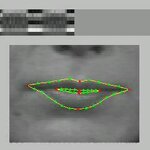Applied Physics
Researchers have taken advantage of the unique coupled semiconducting and piezoelectric properties of zinc oxide nanowires to create a new class of electronic components and devices that could provide the foundation for a broad range of new applications.
So far, the researchers have demonstrated field-effect transistors, diodes, sensors – and current-producing nanogenerators – that operate by bending zinc oxide nanowires and nanobelts. The new components take advantage of the relationship between the mechanical and electronic coupled behavior of piezoelectric nanomaterials, a mechanism the…
The Altair 8800, introduced in the early 1970s, was the first computer you could build at home from a kit. It was crude, didn't do much, but many historians would say that it launched the desktop computer revolution.
Hod Lipson, Cornell assistant professor of mechanical and aerospace engineering, thinks a little machine he calls a Fab@Home may have the same impact.
Hod Lipson, assistant professor of mechanical and aerospace engineering, right, and engineering graduate student Evan Malone work with a "Fab@Home" machine in the Computational Synthesis Lab in Upson Hall Feb. 22. On the stage is…

The world's first direct electrical link between nerve cells and photovoltaic nanoparticle films has been achieved by researchers at the University of Texas Medical Branch at Galveston (UTMB) and the University of Michigan. The development opens the door to applying the unique properties of nanoparticles to a wide variety of light-stimulated nerve-signaling devices — including the possible development of a nanoparticle-based artificial retina.
Nanoparticles are artificially created bits of matter not much bigger than individual atoms. Their behavior is controlled by the same forces that…
In 2000, Georgia Tech researchers showed that fluid dynamics theory could be modified to work on the nanoscale, albeit in a vacuum. Now, seven years later they've shown that it can be modified to work in the real world, too – that is, outside of a vacuum. The results appear in the February 9 issue of Physical Review Letters (PRL).
Understanding the motion of fluids is the basis for a tremendous amount of engineering and technology in contemporary life. Planes fly and ships sail because scientists understand the rules of how fluids like water and air behave under varying conditions. The…

Northern Nevada energy consumers can be excused if they have a sense of "sticker shock" when their power bills come due following the holiday season. Or, that they have a feeling of powerlessness as the price of gasoline climbs to $3 per gallon.
They wonder: will the days of the $1 tank of gas ever return?
Thanks to research done by a University of Nevada, Reno professor in the area of hydrogen energy generation, soaring power bills could become a thing of the past. And, finding a power source for your car that costs as little as $1 per gallon could also soon become a welcome reality.…

Bacteria could be used to help steady buildings against earthquakes, according to researchers at UC Davis. The microbes can literally convert loose, sandy soil into rock.
When a major earthquake strikes, deep, sandy soils can turn to liquid, with disastrous consequences for buildings sitting on them. Currently, civil engineers can inject chemicals into the soil to bind loose grains together. But these epoxy chemicals may have toxic effects on soil and water, said Jason DeJong, an assistant professor of civil and environmental engineering at UC Davis.
The new process, so far tested only at a…

Researchers at the University of East Anglia are about to embark on an innovative new project to develop computer lip-reading systems that could be used for fighting crime.
The three-year project, which starts next month, will collect data for lip-reading and use it to create machines that automatically convert videos of lip-motions into text. It builds on work already carried out at UEA to develop state-of-the-art speech reading systems.
CLICK ABOVE FOR MOVIE.Existing work from the University of East Anglia has shown how mouth motions can be converted into visual "signature" shown at the…

On Feb. 19 at the annual meeting of the American Association for the Advancement of Science in San Francisco, movie lovers get a behind-the-scenes glimpse at the physics-based simulations that breathe life into fantasy.
"It is an exhaustive task to prescribe the motion of every degree of freedom in a piece of clothing or a crashing wave," says Ron Fedkiw, an assistant professor of computer science at Stanford who will speak about computations used to make solids and fluids more realistic in feature films. "Since these motions are governed by physical processes, it can be difficult to make…

Nothing says romance like having your bone tissue extracted to show your love. But Biojewellry in the UK is doing exactly that.
The project is seeking couples who want to donate their bone cells - a couple having their wisdom teeth removed would be ideal. Their cells will be prepared and seeded onto a bioactive scaffold. This pioneering material encourages the cells to divide and grow rapidly in a laboratory environment, so that the scaffold disappears and is replaced by living bone tissue.
The couple’s cells will be grown at Guy’s Hospital and finished bone tissue will be taken to a…

Researchers at the University of California, Berkeley, have successfully generated electricity from heat by trapping organic molecules between metal nanoparticles, an achievement that could pave the way toward the development of a new source for energy.
The discovery, described in a study published today (Thursday, Feb. 15) in Science Express, an electronic publication of the journal Science, is a milestone in the quest for efficient ways to directly convert heat into electricity. Currently, the dominant method of power generation involves burning fossil fuels to create heat, often in the…